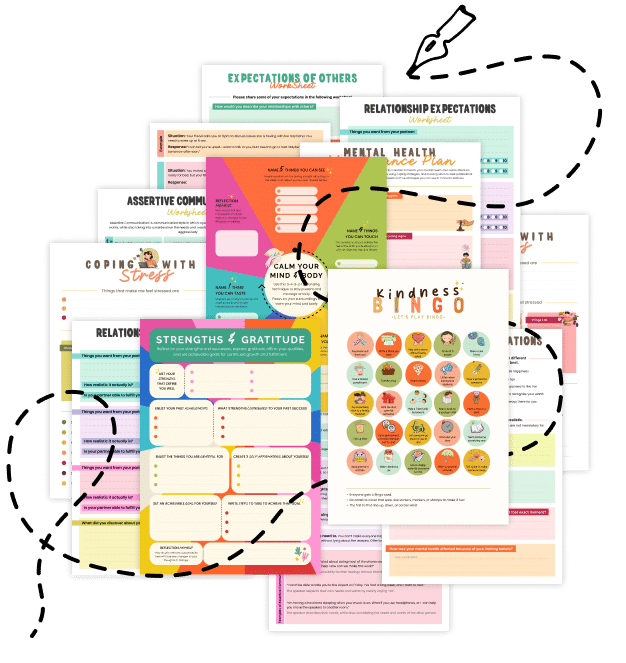20 Things You Should Know About Positive Disintegration
Dive into the transformative theory of how inner turmoil and crises can spur higher personal growth. Developed by psychologist Kazimierz Dąbrowski, Positive Disintegration challenges the idea that psychological distress is purely negative—showing how it can propel individuals to new levels of emotional and moral development.
1. What Is Positive Disintegration?
Positive Disintegration is a developmental theory suggesting that certain psychological struggles—anxiety, inner conflict, or moral dilemmas—break down old mental structures so new, more advanced ones can form. Think of it as “falling apart” in a way that eventually fosters growth.
2. Dąbrowski’s Vision
Polish psychiatrist and psychologist Kazimierz Dąbrowski coined the term. His theory views personal crises not as purely pathological but as opportunities for reconstructing a more authentic, self-determined personality.
3. The Role of “Disintegration”
“Disintegration” refers to the fragmentation of one’s prior beliefs, habits, or sense of self. While frightening or disorienting, this breakdown is often the catalyst for reevaluating personal values and pursuing higher levels of functioning.
4. A Multi-Level Framework
Dąbrowski’s model outlines five levels of development. At lower levels, individuals are driven by basic impulses and social norms. Higher levels involve internal moral codes and a deeply examined sense of self, achieved through inner conflict.
5. Emotional Overexcitabilities
Positive Disintegration links intense emotions or “overexcitabilities” (such as heightened sensitivity to sensory input, feelings, or intellect) to a higher capacity for personal transformation. What others call “too sensitive” might be a gateway to deeper growth.
6. Discomfort as a Guide
Emotional stress or dissatisfaction can signal a mismatch between your current self and your potential. Rather than avoiding discomfort, Dąbrowski suggests confronting it can spark realignment with one’s deeper ideals.
7. Internal vs. External Conflict
While external factors like life events trigger crises, genuine disintegration is an internal clash—questioning your beliefs, behaviors, or moral codes. It’s the wrestling within that prompts self-discovery and eventual reconstruction.
8. Individual Autonomy Emerges
The end goal isn’t to conform to social expectations but to cultivate an inner-driven sense of morality and purpose. Those who undergo positive disintegration often develop personal ideals that guide them, even if they conflict with societal norms.
9. Creative Potential
Many artists, innovators, and empathetic leaders show traits of high sensitivity and moral questioning—fuel for creativity and empathy. Dąbrowski’s theory highlights how these traits can arise from disintegration periods.
10. Phase of Doubt and Depression
During disintegration, individuals may struggle with depression or existential angst. Recognizing these feelings as part of a growth phase (rather than an endpoint) can reframe crises as meaningful transitions.
11. Not All Disintegration Is Positive
Dąbrowski differentiates between “positive” and “negative” breakdowns. Positive Disintegration eventually yields constructive reorganization; negative disintegration may lead to chaos without growth if not guided by introspection or supportive environments.
12. Role of Environment in Positive Disintegration
While crises spark inner turmoil, supportive social environments—like mentors, therapists, or understanding peers—can offer the space to reflect and rebuild. Without support, fear or despair might derail positive outcomes.
13. Self-Directed Learning
As you progress through higher developmental levels, you rely more on self-reflection, ethical principles, and personal authenticity. This self-directed approach drives continuous psychological evolution.
14. Positive Disintegration Connection to Existential Themes
Questions like “What is my life’s purpose?” or “Why am I the way I am?” often surface during disintegration. Embracing these existential inquiries can deepen self-awareness and purpose.
15. Positive Disintegration Link to Overcoming Trauma
Some trauma survivors experience post-traumatic growth, resonating with Dąbrowski’s notion that adversity can catalyze profound personal development—though it requires intentional processing and resilience.
16. Balance with Stability
Even as you break old structures, you need some grounding to rebuild. Balancing introspection with practical self-care (sleep, social support, routine) prevents burnout or complete collapse.
17. Path to Authenticity
Emerging from a positive disintegration, you might feel more genuine in expressing who you are, less afraid of social disapproval, and more attuned to what matters deeply to you.
18. Encouragement for Gifted Individuals
Dąbrowski’s work is particularly insightful for people who experience intense emotional or intellectual overexcitabilities. It reassures them that turmoil can be part of a journey toward exceptional personal development.
19. Therapy and Positive Disintegration
Therapists aware of Dąbrowski’s theory often help clients see crises as potential turning points. They guide introspection, moral examination, and encourage building new, self-chosen life frameworks.
20. Related Topics to Explore
- Learned Industriousness: Channel your turmoil into disciplined effort that yields growth.
- Emotional Granularity: Refine your emotional vocabulary to better navigate internal conflict.
- Cognitive Defusion: Learn techniques to detach from negative thoughts during disintegration phases.
- Psychological Flexibility: Adapt more nimbly to inner changes, minimizing fear of identity shifts.
Quick Tips for Navigating Positive Disintegration
- Embrace Inner Conflict: Recognize anxiety or doubt as signals for change rather than flaws to squash.
- Seek Insight, Not Escape: Journal, meditate, or talk with trusted friends instead of numbing discomfort.
- Pace Your Growth: Avoid pushing yourself to transform overnight; gradual reflection yields sustainable change.
- Validate Sensitivity: If you’re highly sensitive, see it as a strength that can deepen understanding, not a weakness.
- Celebrate New Insights: Notice each stride in personal awareness—small epiphanies pave the road to bigger transformations.
By understanding Positive Disintegration, you learn that deep personal change often grows out of turmoil or dissatisfaction. Rather than viewing internal struggle as a dead-end or purely negative state, this theory shows how crises can crack open stagnant self-concepts—inviting you to rebuild with greater authenticity, empathy, and moral courage. Share this article with friends or colleagues grappling with transitions—help them see their challenges as stepping stones to higher development!


